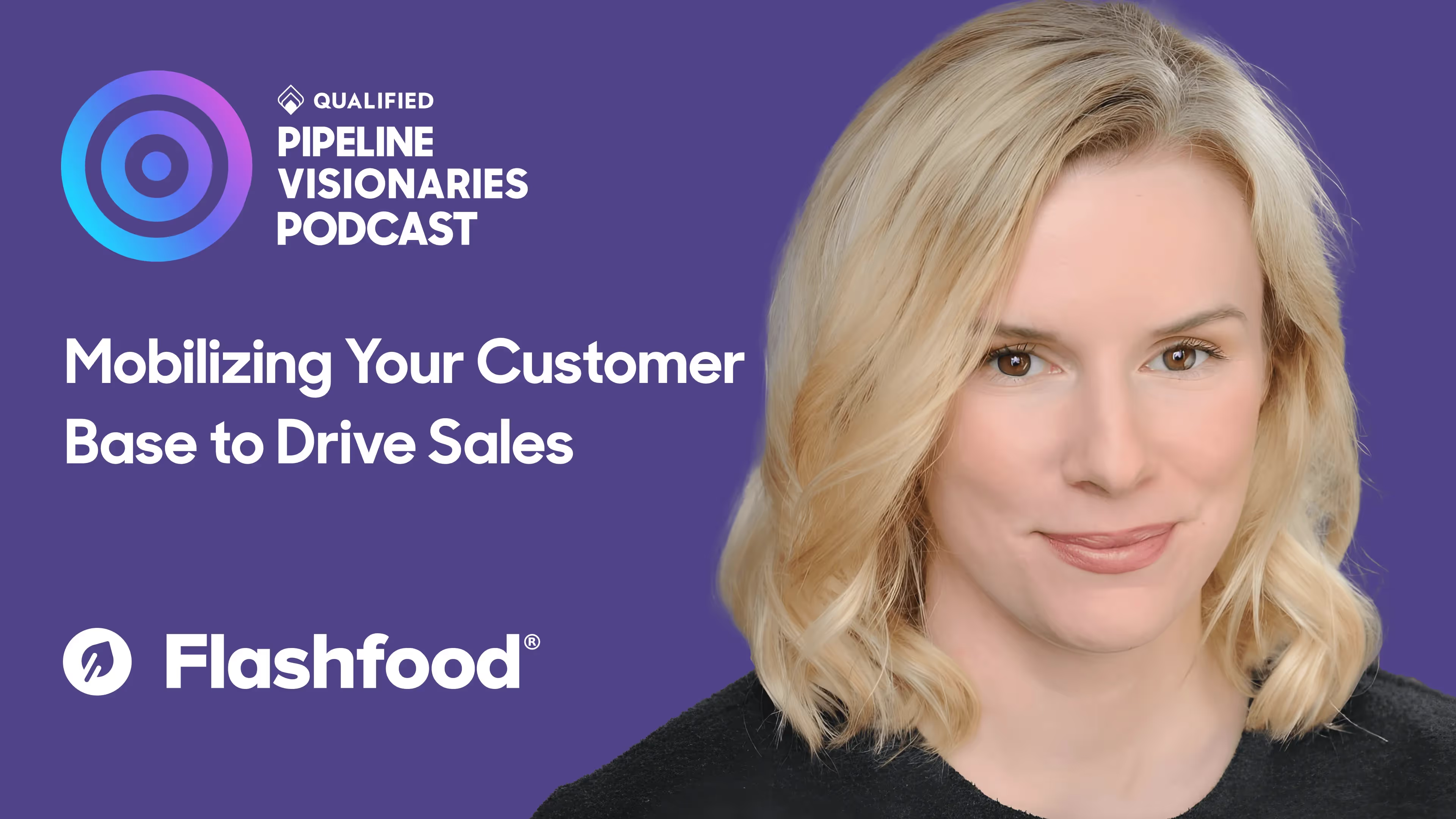Mobilizing Your Customer Base to Drive Sales
Jordan Schenck, Chief Brand Officer at Flashfood, shares some unique strategies for mobilizing your customer base to boost sales and brand awareness even without Coca-Cola dollars.




Jordan Schenck, Chief Brand Officer at Flashfood, shares some unique strategies for mobilizing your customer base to boost sales and brand awareness even without Coca-Cola dollars.

This episode features an interview with Jordan Schenck, Chief Brand Officer at Flashfood, a technology company working to eliminate retail food waste by connecting consumers with discounted food nearing its best-by date.
In this episode, Jordan shares with us how to push through the zeitgeist around what you do to change consumer perception, and she talks about some unique strategies for mobilizing your fan base to boost sales and brand awareness even without Coca-Cola dollars.
Key Takeaways:
Stay up to date with weekly drops of fresh B2B marketing and sales content.
Jordan Schenck, Chief Brand Officer at Flashfood, shares some unique strategies for mobilizing your customer base to boost sales and brand awareness even without Coca-Cola dollars.


This episode features an interview with Jordan Schenck, Chief Brand Officer at Flashfood, a technology company working to eliminate retail food waste by connecting consumers with discounted food nearing its best-by date.
In this episode, Jordan shares with us how to push through the zeitgeist around what you do to change consumer perception, and she talks about some unique strategies for mobilizing your fan base to boost sales and brand awareness even without Coca-Cola dollars.
Key Takeaways:
Stay up to date with weekly drops of fresh B2B marketing and sales content.
Jordan Schenck, Chief Brand Officer at Flashfood, shares some unique strategies for mobilizing your customer base to boost sales and brand awareness even without Coca-Cola dollars.


This episode features an interview with Jordan Schenck, Chief Brand Officer at Flashfood, a technology company working to eliminate retail food waste by connecting consumers with discounted food nearing its best-by date.
In this episode, Jordan shares with us how to push through the zeitgeist around what you do to change consumer perception, and she talks about some unique strategies for mobilizing your fan base to boost sales and brand awareness even without Coca-Cola dollars.
Key Takeaways:
Stay up to date with weekly drops of fresh B2B marketing and sales content.
Jordan Schenck, Chief Brand Officer at Flashfood, shares some unique strategies for mobilizing your customer base to boost sales and brand awareness even without Coca-Cola dollars.



This episode features an interview with Jordan Schenck, Chief Brand Officer at Flashfood, a technology company working to eliminate retail food waste by connecting consumers with discounted food nearing its best-by date.
In this episode, Jordan shares with us how to push through the zeitgeist around what you do to change consumer perception, and she talks about some unique strategies for mobilizing your fan base to boost sales and brand awareness even without Coca-Cola dollars.
Key Takeaways:
Discover how we can help you convert more prospects into pipeline–right from your website.